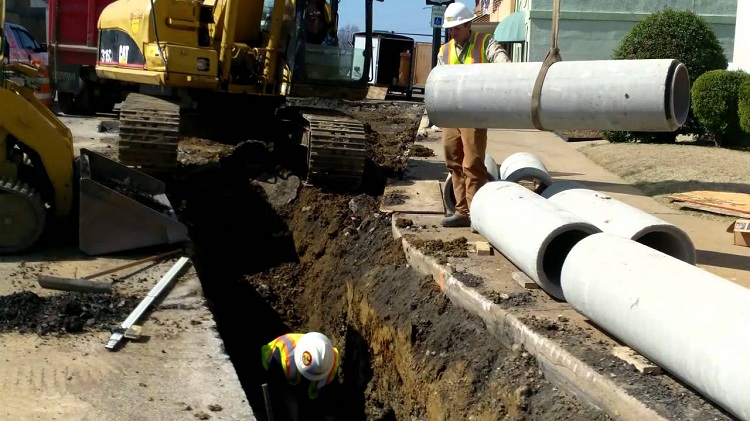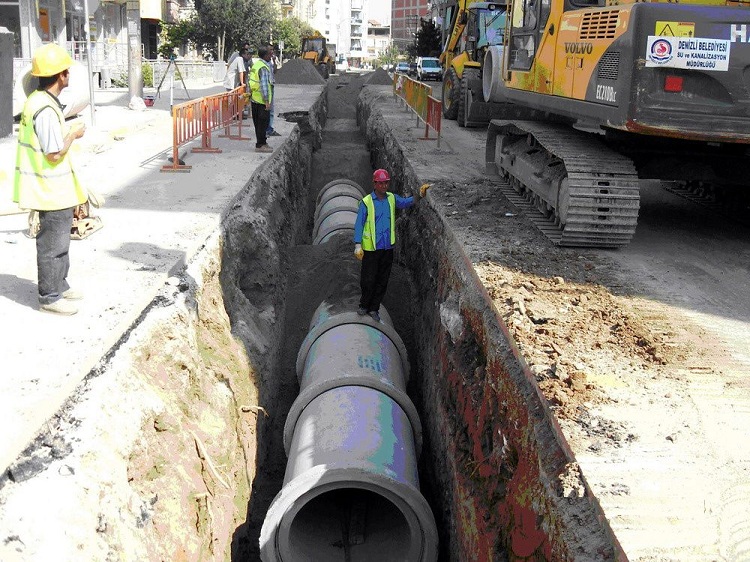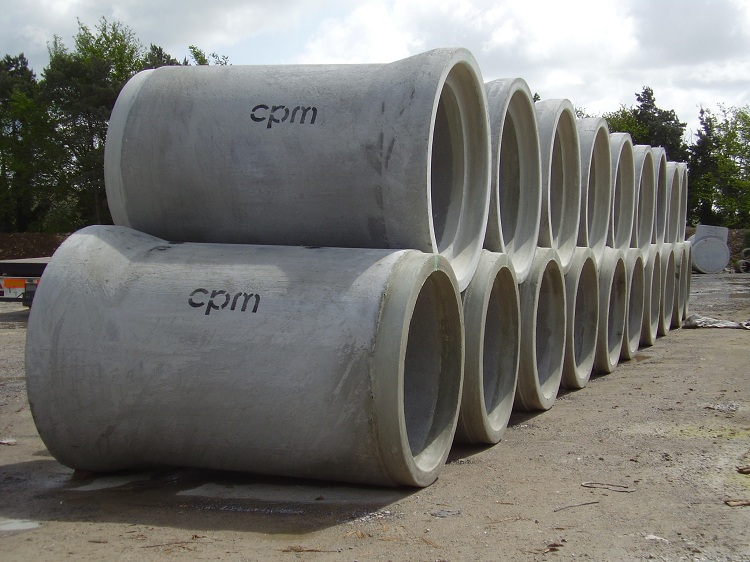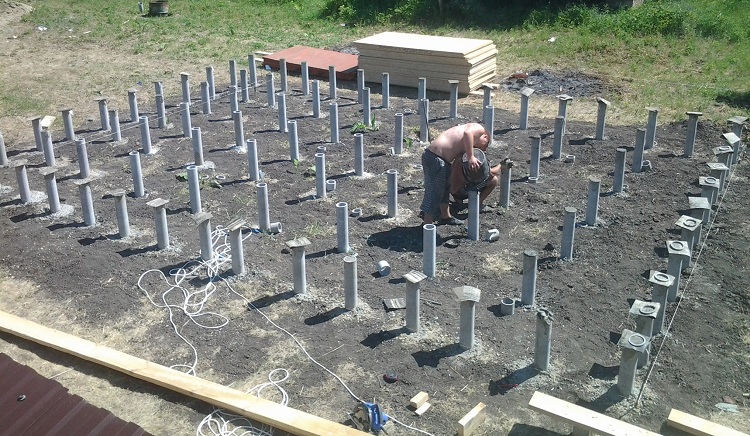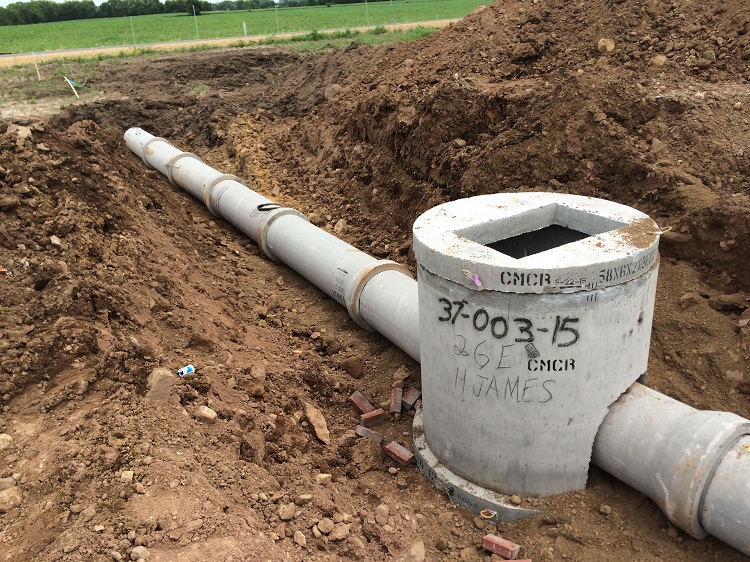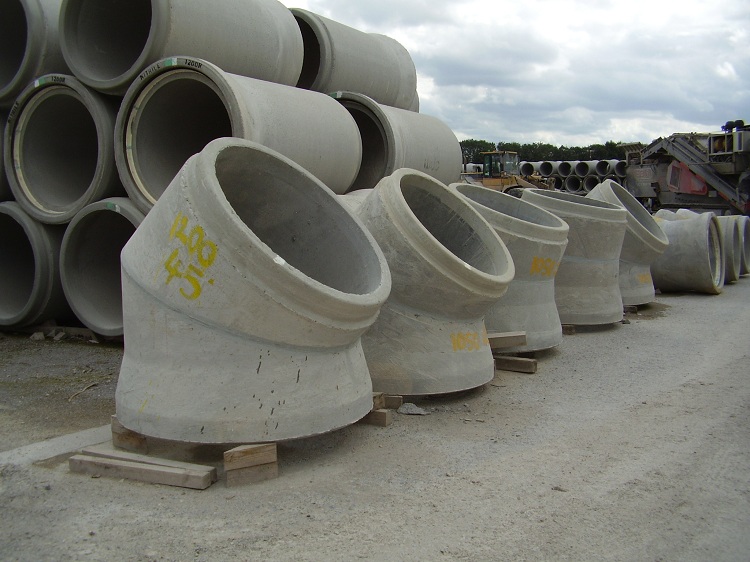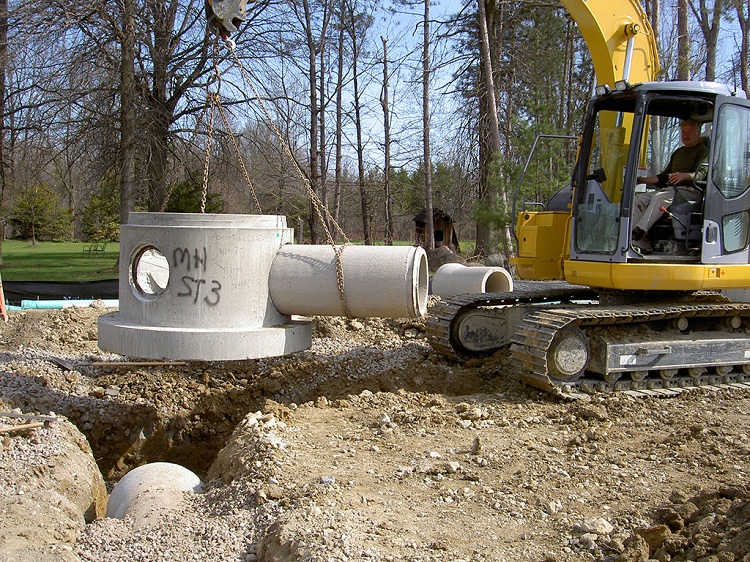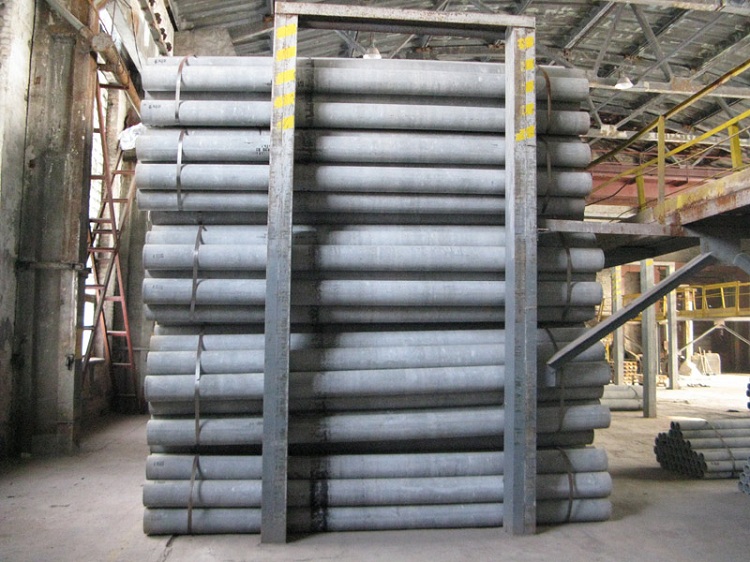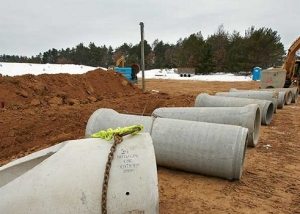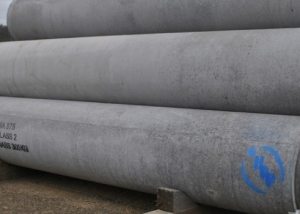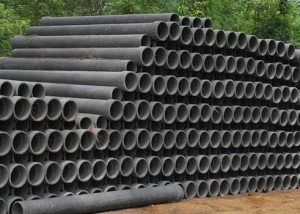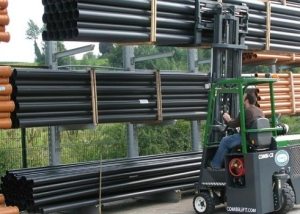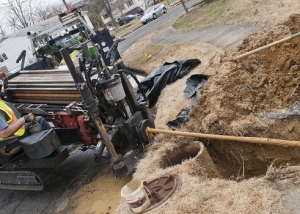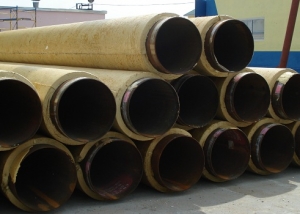Chrysotile cement pipes are products that are used for the installation of various communications. The composition of chrysotile cement pipes includes cement, asbestos and water. Asbestos fiber, whose share is about 20%, has a protective function and is reinforcement. For the production of these pipes, the most harmless type of asbestos cement is used - chrysotile.
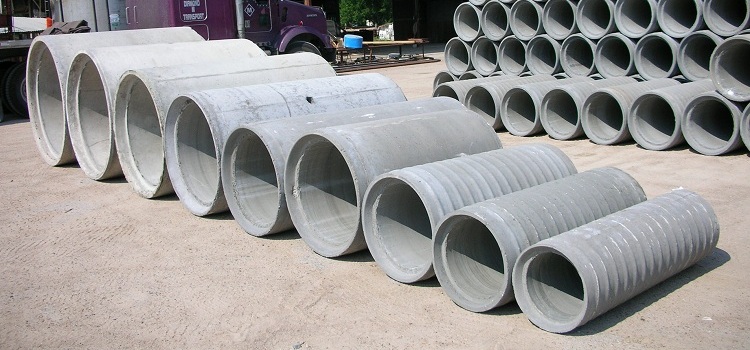
Chrysotile cement pipes are produced from a safe type of asbestos, therefore, they can be used in all types of communications
Content
Product Features
Asbestos (or magnesium hydrosilicate) is a material that has been known for several hundred years. There are two types of this raw material that have differences in composition:
- chrysotile (white asbestos);
- amphibole asbestos.
Amphibole type is not used for the production of pipes, since it is a carcinogen and harmful to human health. There is a ban on the extraction of amphibole asbestos. Chrysotile is not a toxic substance, so it is used for various needs, including for the production of pipe products. White asbestos does not have toxic qualities, it is non-radioactive.
Chrysotile cement pipes contain asbestos fibers, which are packaged in a concrete matrix. In the last century, these pipes were used quite rarely, as they were considered carcinogenic. The then GOST allowed their use only for land reclamation. To date, the properties of this material have been well studied and are used in many areas of life.
There is a “Code of practice for the design and installation of underground utilities”, in which chrysotile cement products have a second category of reliability for heat supply, which allows them to be used for laying industrial and household heating systems.
Note! When installing heating systems from chrysotile cement, it must be remembered that the pressure indicators of the working medium should not exceed 1.6 MPa, and the temperature should not exceed 150 ° C.
The use of chrysotile cement pipes is authorized by the Ministry of Health of the Russian Federation. Their use is regulated by the corresponding documentation (Hygienic standards GN 2.1.2 / 2.2.1.1009–002).
To date, more than 3 million kilometers of communications from this material have been laid. Moreover, more than 1 million - in Russia. In Europe, gas pipelines from chrysotile cement products are also common. The first chrysotile cement water pipe was mounted on the territory of our country in 1965 in the Saratov region. This water supply system still works, which proves the high performance of this material.
Advantages and disadvantages of chrysotile cement pipes
Each material for the production of tube products has its own positive qualities and certain disadvantages. The appropriateness of using chrysotile cement depends on various factors, primarily on the performance characteristics of the future highway. Consider the main advantages of this material:
- has a high coefficient of water resistance;
- resistant to mechanical stress, as it is characterized by high strength characteristics;
- copes with quite large pressure indicators (in some cases, pipes can withstand up to 5.8 MPa);
- has a fairly long operational period, which can reach 25 years and above;
- It has high thermal conductivity, which is perhaps the main advantage, since they are used for the installation of heating systems. Low thermal conductivity is explained by wall thickness. It is 2–4 times higher for such products than for steel parts;
- resistant to corrosion and chemically active substances;
- does not need waterproofing protection;
- differs in small weight therefore products from it are easy to store and transport;
- the versatility of the products allows their use in various designs (stormwater, water pipes, heat pipes). Also, such samples are considered very popular in the arrangement of pressureless sewer lines;
- installation work related to laying communication from this material is fast and simple;
- The assortment of pipes made of this material is wide and varied. If desired, you can select the desired diameter for a particular case;
- the cost of such products is very affordable.
Chrysotile cement products also have their drawbacks. The main disadvantages of parts from this material include:
- transportation and installation of workpieces with large diameters is impossible without the use of special equipment;
- the cost of installing products with a large diameter increases due to the cost of special equipment for loading and transportation.
Like other products, chrysotile cement pipes can be fake and do not have all the positive qualities, so it is recommended that you carefully study the relevant documentation attached to them. The advantages of such products are much greater than the minuses, this explains their demand, despite the very wide modern range of pipes.
Types of chrysotile cement pipes
All chrysotile cement products vary in terms of length and inner diameter. Chrysotile cement parts can have dimensions of the internal section - from 100 to 500 millimeters. The length of such pipes ranges from 2950 to 5950 millimeters.
All chrysotile cement or asbestos cement pipes are divided into two main types according to their quality characteristics and application features:
- pressure head;
- pressureless.
Non-pressure (BNT and BNTT)
These pipes can be of two types:
- ordinary, which are marked BNT;
- Thin-walled with BNTT marking.
Non-pressure chrysotile cement pipes (BNT) are used for different purposes:
- in drainage collectors of land reclamation;
- for gravity sewer;
- in cable communication channels (perform a protective function);
- in ventilation communications;
- for the device of garbage chutes;
- for chimney constructions.
Often, free-flow chrysotile cement pipes are used for the installation of the smoke exhaust channel, however, such pipes have certain limitations. For example, the temperature in the construction of chrysotile cement should not exceed 300 ° C. This means that they will cope well with the tasks if they are used for gas boilers that do not have very high power. And for heating systems operating on solid fuel (coal, for example), it is better not to use products made from chrysotile cement.
In addition, non-pressure parts are used in the arrangement of the foundations of houses.They make a columnar monolithic foundation, which is suitable for structures with lightweight walls. For such purposes, products with a diameter of 100 to 200 mm are selected.
Note! The BNT pipe passes the reinforcement procedure, and then concrete mortar is poured into it, which solidifies and as a result of this, a monolithic part forms, which serves as a support for the building.
The pipe foundation is also carried out in the construction of facilities with a small number of floors. Depending on the weight of the building, a pipe with a diameter of 100 to 500 mm is selected. Such products undergo the same procedures (reinforcement and pouring). The ratio of the diameter of the pipe and the thickness of its walls is presented in table No. 1.
Table 1
| Mm | Wall thickness mm | |
| BNT | BNTT | |
| 500 | 22–24 | 24 |
| 400 | 17–25 | 17 |
| 350 | 16 | – |
| 300 | 14–16 | 14 |
| 250 | 13–14,5 | 12–13 |
| 200 | 11–13 | 11 |
| 150 | 10 | 9 |
| 125 | – | |
| 100 | 9 | 8 |
Pressureless chrysotile cement pipes can be used for different purposes. It is also worth mentioning that of them often perform various decorative elements that fit very harmoniously into the overall appearance of the site. From such details can be made urns, flower beds, columns. If the product will be used as a decorative pillar, it is recommended to fill the void inside it with sand or some other material. Sawed along chrysotile cement BNT pressureless pipes can be used as drains.
Pressure products
Pressure chrysotile cement pipes have higher strength characteristics. This is necessary in order to withstand the pressure of the working environment. They are used for installation:
- heat conduits;
- water pipes;
- oil pipelines.
Marking of pressure products depends on the features of their application. That is, the products that will be used during the installation of the water supply system are designated "VT". And those parts from which the heating system is made are “TT”.
There is a division into 7 classes in terms of working pressure, which a chrysotile cement pipe can withstand. These indicators vary from 0.3 to 1.6 MPa, they are presented in table No. 2.
table 2
| Class | Value working pressure, MPa |
| 1 | 0,3 |
| 2 | 0,6 |
| 3 | 0,9 |
| 4 | 1 |
| 5 | 1,2 |
| 6 | 1,5 |
| 7 | 1,6 |
Pressure parts can replace pressureless parts in all cases. According to SNiP 41–20, they can serve consumers of the second and third categories. That is, they are allowed to be used for installation of systems that can work with interruptions in the supply of heat. For continuous heating systems, they are not applied (to the continuous heating systems of the first category include: hospitals, child care facilities, etc.).
Docking Features
There are several options for joining chrysotile cement pipes. The most popular of these is the coupling method. Polyethylene couplings (MPT) are able to join the two ends of the pipes. Docking is carried out thanks to the heating of the coupling - it is placed in a container with water heated to 90–100 ° C and maintained in such water for at least 10 minutes. Then the hot sleeve is put on the chrysotile cement part at one end, and the second pipe is inserted from the opposite side. This is a very convenient and fairly simple method of installing communications.
But it is worth remembering that this method is used for installation of pipeline structures in normal conditions, when the soil is dry. On wet soil, the individual elements of the chrysotile cement construction are connected by means of chrysotile cement couplings, which are then poured with hot bitumen.
For laying an asbestos-cement pipeline, as a rule, butt welding equipment is not required. Special equipment is used only if the pipes have a large diameter and are massive. Docking of such parts among themselves is carried out using polyethylene or chrysotile cement couplings.Adjustment of pipe ends to the required dimensions or turning occurs at the production stage. The turning of the end of the part is carried out taking into account how rough a pipe with a certain diameter should have.
One of the structural elements of the couplings is a sealing ring, which provides excellent indicators of the tightness of the connection. It is worth noting that there is a small gap between the pipe and the special coupling. The elasticity of the seal and the free gap allow the desired bending of the structure (up to 3 °).
Helpful information! All the basic provisions for laying pipelines made of this material can be found in SP 41-106-2006.
Chrysotile cement pipes are produced in straight sections, so not so long ago the components for such pipelines were made of steel, and a special heat chamber was mounted on each turning section or branch. However, now there is an excellent solution to circumvent these difficulties - a special normal, which is a set of concrete cubes.
These concrete cubes enclose a connection, i.e. a coupling. The concrete cube also performs a protective function, preventing moisture from entering the steel elements. However, even if the steel collapses due to the harmful effects of corrosion, such a unit will continue to work, since the channel made in the concrete cube will remain. Such a normal is multidisciplinary and can be used for pipes with different cross-sectional indicators.
When installing asbestos-cement or polyethylene couplings, special hand-held devices are used that simplify installation work. Today, these devices are the third modification and are constantly being improved. There are tools to fit the chrysotile cement pipe under the seal. With the help of such manual devices, it is possible to quickly turn the pipe under the o-ring right at the assembly site of the highway. In order to divide such a product, use a conventional hacksaw for metal.
Storage and transportation
Storage and transportation of chrysotile cement pipes is subject to certain rules. Chrysotile cement products are stacked and it is very important that the parts in the stacks are on a flat surface.
If the surface on which the chrysotile cement products are stored is not smooth and has protrusions and depressions, then you should take care of the wooden lining. In this case, the bottom row of pipes must be securely fixed. When transporting chrysotile cement parts, it must be remembered that they must be firmly fixed before transportation.
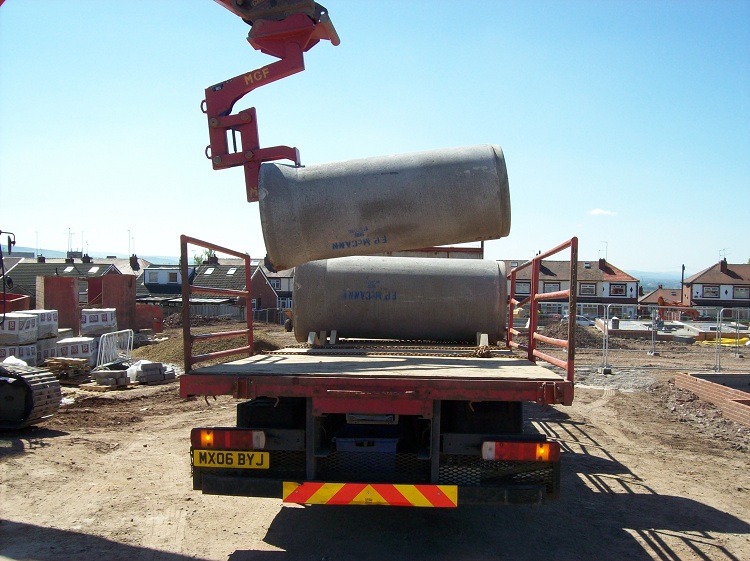
These pipes must be moved with care, preventing them from falling, and should be stored on a flat surface.
Unloading of these products is carried out carefully. In no case can you just throw products out of the car body.
Differences of chrysotile cement pipes from asbestos-cement
Chrysotile cement and asbestos cement pipes are equally popular in laying various communications. Each of the types of these products has some distinctive features, however, these differences are not too significant.
First, it is worth noting the fact that chrysotile cement parts are more environmentally friendly than asbestos cement. In other parameters, asbestos cement products are more attractive.
The service life of asbestos-cement parts in some cases can reach 50 years, which is 2 times longer than the corresponding indicator of chrysotile cement products, however, with proper operation, the service life of the latter can reach 40-50 years.In addition, asbestos pipes have a higher resistance to high temperatures, they can be laid in soils with high moisture indicators, as they are resistant to corrosion.
Important! When installing an asbestos-cement pipeline, a lot of dust is emitted, therefore, when installing communication from asbestos-cement parts, it is necessary to take care of the protection of the respiratory tract and purchase special respirators. Chrysotile cement products do not have such a disadvantage.
Despite the shortcomings, both types of these pipes occupy a strong position in the construction market.
Manufacturing process
Such pipes are produced using a method called the Hatchcheck / Mazza method. The production process is carried out as follows: a solution of Portland cement (80–85%) and a mixture of chrysotile asbestos fibers (10–20%) are mixed. Fibers can have different lengths and according to this indicator are divided into long and medium.
This mixture is placed in a rotating cylinder, which operates on a sieve principle. In this setup, the material is dehydrated, resulting in a thin layer of chrysotile cement, which is wrapped around the core. In the process of wrapping, the material is acted upon by a certain, controlled pressure. This procedure is performed until the desired wall thickness is obtained. After this, the core is removed and the chrysotile cement part is dried. Drying takes place in a tunnel kiln that maintains a low temperature.
Last of all, the ends of the finished pipe are processed, turning to the desired size. Then they put on special couplings, which are made very simply: a chrysotile cement pipe of a larger diameter is cut into the desired segments, which in the future will become couplings for pipes with a smaller diameter. The process of obtaining pipes is carried out taking into account all the necessary norms and rules, as well as safety precautions. The result is pipes with smooth walls and excellent performance.
Chrysotile cement and asbestos cement pipe market overview
Chrysotile cement products are much more profitable, from a financial point of view, than steel or polymer pipes. In addition, the thermal conductivity of such communications is lower than that of steel by 60-100 times.
The cost for such pipes is usually lower than for steel and polymer pipes 2–4 times. Market research allows you to divide chrysotile cement pipes into 2 categories, which are quite in demand:
- Pressure pipes.
- Pressureless pipes.
In turn, these two categories can be differentiated by areas of use. Consumers of pressure products are:
- Housing and communal services enterprises that install heating networks and water pipes from these pipes.
- Enterprises that are engaged in the installation of gas communications.
- Organizations that produce oil.
- Private individuals.
Consumers of non-pressure products are:
- Organizations that use these pipes as capsules to protect various cables (telephone, electrical).
- Housing and communal services enterprises using these pipes in pressureless sewer structures.
- Individuals who purchase this product for various needs (including for decorative elements).
Chrysotile cement pipes are very popular due to the fact that they have an attractive cost and have excellent technical characteristics for use in various fields. But these products won the most popularity in the installation of heating systems, as they have a very low coefficient of thermal conductivity, which communications made from other materials (steel, plastic) cannot boast of. Installation of the chrysotile cement pipeline is fast and easy.When choosing these pipes, it is recommended to pay attention to quality certificates and other technical documentation in order to exclude the possibility of buying low-quality or defective goods.
